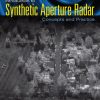Fundamentals of Semiconductor Devices 2nd Edition by Betty Anderson 1259877971 9781259877971
$50.00 Original price was: $50.00.$25.00Current price is: $25.00.
Fundamentals of Semiconductor Devices 2nd Edition by Betty Anderson – Ebook PDF Instant Download/DeliveryISBN: 1259877971, 9781259877971
Full download Fundamentals of Semiconductor Devices 2nd Edition after payment.
![]()
Product details:
ISBN-10 : 1259877971
ISBN-13 : 9781259877971
Author : Betty Anderson
Fundamentals of Semiconductor Devicesprovides a realistic and practical treatment of modern semiconductor devices. A solid understanding of the physical processes responsible for the electronic properties of semiconductor materials and devices is emphasized. With this emphasis, the reader will appreciate the underlying physics behind the equations derived and their range of applicability. The author’s clear writing style, comprehensive coverage of the core material, and attention to current topics are key strengths of this book.
Fundamentals of Semiconductor Devices 2nd Table of contents:
Part 1 Materials
Chapter 1 Electron Energy and States in Semiconductors
1.1 Introduction and Preview
1.2 A Brief History
1.3 Application to the Hydrogen Atom
1.3.1 The Bohr Model for The Hydrogen Atom
1.3.2 Application to Molecules: Covalent Bonding
1.3.3 Quantum Numbers and the Pauli Exclusion Principle
1.3.4 Covalent Bonding in Crystalline Solids
1.4 Wave-Particle Duality
1.5 The Wave Function
1.5.1 Probability and the Wave Function
1.6 The Electron Wave Function
1.6.1 The Free Electron in One Dimension
1.6.2 The De Broglie Relationship
1.6.3 The Free Electron in Three Dimensions
1.6.4 The Quasi-Free Electron Model
1.6.5 Reflection and Tunneling
1.7 A First Look at Optical Emission and Absorption
1.8 Crystal Structures, Planes, and Directions
1.9 Summary
1.10 References
1.11 Review Questions
1.12 Problems
Chapter 2 Homogeneous Semiconductors
2.1 Introduction and Preview
2.2 Pseudo-Classical Mechanics for Electrons in Crystals
2.2.1 One-Dimensional Crystals
2.2.2 Three-Dimensional Crystals
2.3 Conduction Band Structure
2.4 Valence Band Structure
2.5 Intrinsic Semiconductors
2.6 Extrinsic Semiconductors
2.6.1 Donors
2.6.2 Acceptors
2.7 The Concept of Holes
2.7.1 Hole Charge
2.8 Effective Mass of Electrons and Holes
2.9 Density-of-States Functions for Electrons in Bands
2.9.1 Density of States and Density-of-States Effective Mass
2.10 Fermi-Dirac Statistics
2.10.1 Fermi-Dirac Statistics for Electrons and Holes in Bands
2.11 Electron and Hole Distributions with Energy
2.12 Temperature Dependence of Carrier Concentrations in Nondegenerate Semiconductors
2.12.1 Carrier Concentrations at High Temperatures
2.12.2 Carrier Concentrations at Low Temperatures (Carrier Freeze-Out)
2.13 Degenerate Semiconductors
2.13.1 Impurity-Induced Band-Gap Narrowing
2.13.2 Apparent Band-Gap Narrowing
2.14 Summary
2.14.1 Nondegenerate Semiconductors
2.14.2 Degenerate Semiconductors
2.15 References
2.16 Review Questions
2.17 Problems
Chapter 3 Current Flow in Homogeneous Semiconductors
3.1 Introduction
3.2 Drift Current
3.3 Carrier Mobility
3.3.1 Carrier Scattering
3.3.2 Scattering Mobility
3.3.3 Impurity Band Mobility
3.3.4 Temperature Dependence of Mobility
3.3.5 High-Field Effects
3.4 Diffusion Current
3.5 Carrier Generation and Recombination
3.5.1 Band-to-Band Generation and Recombination
3.5.2 Two-Step Processes
3.6 Optical Processes in Semiconductors
3.6.1 Absorption
3.6.2 Emission
3.7 Continuity Equations
3.8 Minority Carrier Lifetime
3.8.1 Rise Time
3.8.2 Fall Time
3.9 Minority Carrier Diffusion Lengths
3.10 Quasi Fermi Levels
3.11 Summary
3.12 References
3.13 Review Questions
3.14 Problems
Chapter 4 Nonhomogeneous Semiconductors
4.1 Constancy of The Fermi Level at Equilibrium
4.2 Graded Doping
4.3 Nonuniform Composition
4.4 Graded Doping and Graded Composition Combined
4.5 Summary
4.6 References
4.7 Review Questions
4.8 Problems
Supplement to Part 1 Introduction to Quantum Mechanics
S1.1 Introduction
S1.2 The Wave Function
S1.3 Probability and the Wave Function
S1.3.1 Particle in a One-Dimensional Potential Well
S1.4 Schrödinger’s Equation
S1.5 Applying Schrödinger’s Equation to Electrons
S1.6 Some Results From Quantum Mechanics
S1.6.1 The Free Electron
S1.6.2 The Quasi-Free Electron
S1.6.3 The Potential Energy Well
S1.6.4 The Infinite Potential Well in One Dimension
S1.6.5 Reflection and Transmission at a Finite Potential Barrier
S1.6.6 Tunneling
S1.6.7 The Finite Potential Well
S1.6.8 The Hydrogen Atom Revisited
S1.6.9 The Uncertainty Principle
S1.7 Phonons
S1.7.1 Carrier Scattering by Phonons
S1.7.2 Indirect Electron Transitions
S1.8 Summary
S1.9 References
S1.10 Review Questions
S1.11 Problems
Part 2 Diodes
Chapter 5 Prototype pn Homojunctions
5.1 Introduction
5.2 Prototype pn Junctions (Qualitative)
5.2.1 Energy Band Diagrams of Prototype pn Junctions
5.2.2 Description of Current Flow in a pn Prototype Homojunction
5.2.3 Tunnel Diodes
5.3 Prototype pn Homojunctions (Quantitative)
5.3.1 Energy Band Diagram at Equilibrium (Step Junction)
5.3.2 Energy Band Diagram with Applied Voltage
5.3.3 Current-Voltage Characteristics of pn Homojunctions
5.3.4 Reverse-Bias Breakdown
5.4 Small-Signal Impedance of Prototype Homojunctions
5.4.1 Junction (Differential) Resistance
5.4.2 Junction (Differential) Capacitance
5.4.3 Stored-Charge Capacitance
5.5 Transient Effects
5.5.1 Turn-Off Transient
5.5.2 Turn-On Transient
5.6 Effects of Temperature
5.7 Summary
5.8 Review Questions
5.9 Problems
Chapter 6 Additional Considerations for Diodes
6.1 Introduction
6.2 Nonstep Homojunctions
6.2.1 Linearly Graded Junctions
6.2.2 Hyperabrupt Junctions
6.3 Semiconductor Heterojunctions
6.3.1 The Energy Band Diagrams of Semiconductor–Semiconductor Heterojunctions
6.3.2 Tunneling-Induced Dipoles
6.3.3 Effects of Interface States
6.3.4 Effects of Lattice Mismatch on Heterojunctions
6.4 Metal-Semiconductor Junctions
6.4.1 Ideal Metal-Semiconductor Junctions (Electron Affinity Model)
6.4.2 Influence of Interface-Induced Dipoles
6.4.3 The Current-Voltage Characteristics of Metal-Semiconductor Junctions
6.4.4 Ohmic (Low-Resistance) Contacts
6.4.5 I-Va Characteristics of Heterojunction Diodes
6.5 Capacitance in Nonideal Junctions and Heterojunctions
6.6 Summary
6.7 References
6.8 Review Questions
6.9 Problems
Supplement to Part 2 Diodes
S2.1 Introduction
S2.2 Dielectric Relaxation Time
S2.2.1 Case 1: Dielectric Relaxation Time for Majority Carriers
S2.2.2 Case 2: Dielectric Relaxation Time for Minority Carriers
S2.3 Junction Capacitance
S2.3.1 Junction Capacitance in a Prototype (Step) Junction
S2.3.2 Junction Capacitance in a Nonuniformly Doped Junction
S2.3.3 Varactors
S2.3.4 Stored-Charge Capacitance of Short-Base Diodes
S2.4 Second-Order Effects in Schottky Diodes
S2.4.1 Tunneling Through Schottky Barriers
S2.4.2 Barrier Lowering in Schottky Diodes Due to The Image Effect
S2.5 Summary
S2.6 Review Questions
S2.7 References
S2.8 Problems
Part 3 Field-Effect Transistors
The Generic FET
Transistors in Circuits
The Basis for Deriving the ID -VDS Characteristics of a FET
Chapter 7 The MOSFET
7.1 Introduction
7.2 MOSFETs (Qualitative)
7.2.1 Introduction to MOS Capacitors
7.2.2 MOS Capacitor Hybrid Diagrams
7.2.3 MOSFETs at Equilibrium (Qualitative)
7.2.4 MOSFETs Not at Equilibrium (Qualitative)
7.3 Drift Model for MOSFETs (Quantitative)
7.3.1 Long-Channel Drift MOSFET Model with Constant Channel Mobility
7.3.2 More Realistic Long-Channel Models: Effect of Fields on the Mobility
7.3.3 Series Resistance
7.4 Comparison of Models with Experiment
7.5 Ballistic Model for MOSFETs
7.6 Some Short-Channel Effects
7.6.1 Dependence of Effective Channel Length on VDS
7.6.2 Dependence of Threshold Voltage on the Drain Voltage
7.7 Subthreshold Leakage Current
7.8 Summary
7.9 References
7.10 Review Questions
7.11 Problems
Chapter 8 Other Field-Effect Transistors
8.1 Introduction
8.2 Measurement of Threshold Voltage and Low-Field Mobility
8.3 Complementary MOSFETs (CMOS)
8.3.1 Operation of The CMOS Inverter
8.3.2 Matching of CMOS Devices
8.4 Switching in CMOS Inverter Circuits
8.4.1 Effect of Load Capacitance
8.4.2 Propagation (Gate) Delay in CMOS Switching Circuits
8.4.3 Pass-Through Current in CMOS Switching
8.5 Other MOSFETs
8.5.1 Silicon on Insulator (SOI) MOSFETs
8.5.2 FinFETs
8.5.3 Nonvolatile MOSFETs
8.6 Other FETS
8.6.1 Heterojunction Field-Effect Transistors (HFETs)
8.6.2 Metal-Semiconductor Field-Effect Transistors (MESFETs)
8.6.3 Junction Field-Effect Transistors (JFETs)
8.6.4 Tunnel Field-Effect Transistors (TFETs)
8.7 Bulk Channel FETs: Quantitative
8.8 Summary
8.9 References
8.10 Review Questions
8.11 Problems
Supplement to Part 3 Additional Consideration for MOSFETs
S3.1 Introduction
S3.2 Dependence of the Channel Charge Qch on the Longitudinal Field ℰL
S3.3 Threshold Voltage for MOSFETs
S3.3.1 Fixed Charge
S3.3.2 Interface Trapped Charge
S3.3.3 Bulk Charge
S3.3.4 Effect of Charges on the Threshold Voltage
S3.3.5 Flat Band Voltage
S3.3.6 Threshold Voltage Control
S3.3.7 Channel Quantum Effects
S3.4 MOSFET Analog Equivalent Circuit
S3.4.1 Small-Signal Equivalent Circuit
S3.4.2 CMOS Amplifiers
S3.5 Unity Current Gain Cutoff Frequency fT
S3.6 MOS Capacitors
S3.6.1 Ideal MOS Capacitance
S3.6.2 The C-VG Characteristics of Real MOS Capacitors
S3.6.3 MOSFET Parameter Analyses from C-VG Measurements
S3.7 Dynamic Random-Access Memories (DRAMs)
S3.8 MOSFET Scaling [6]S3.9 Device and Interconnect Degradation
S3.9.1 MOSFET Integrated Circuit Reliability
S3.10 Summary
S3.11 References
S3.12 Review Questions
S3.13 Problems
Part 4 Bipolar Junction Transistors
Chapter 9 Bipolar Junction Transistors: Statics
9.1 Introduction
9.2 Output Characteristics (Qualitative)
9.3 Current Gain
9.4 Model of a Prototype BJT
9.4.1 Collection Efficiency M
9.4.2 Injection Efficiency γ
9.4.3 Base Transport Efficiency αT
9.5 Doping Gradients in BJTs
9.5.1 The Graded-Base Transistor
9.5.2 Effect of Base Field on β
9.6 Heterojunction Bipolar Transistors (HBTs)
9.6.1 Uniformly Doped HBT
9.6.2 Graded-Composition HBT: (Si: SiGe-Base: Si HBTs)
9.6.3 Double Heterojunction Bipolar Transistor, (DHBT)
9.7 Comparison of Si-Base, SiGe-Base, and GaAs-Base HBTs
9.8 The Basic Ebers-Moll dc Model
9.9 Summary
9.10 References
9.11 Review Questions
9.12 Problems
Chapter 10 Time-Dependent Analysis of BJTS
10.1 Introduction
10.2 Ebers-Moll ac Model
10.3 Small-Signal Equivalent Circuits
10.3.1 Hybrid-Pi Models
10.4 Stored-Charge Capacitance in BJTs
10.5 Frequency Response
10.5.1 Unity Current Gain Frequency fT
10.5.2 Base Transit Time tT
10.5.3 Base-Collector Transit Time tBC
10.5.4 Maximum Oscillation Frequency fmax
10.6 High-Frequency Transistors
10.6.1 Double Poly Si Self-Aligned Transistor
10.7 BJT Switching Transistor
10.7.1 Output Low-To-High Transition Time
10.7.2 Schottky-Clamped Transistor
10.7.3 Double Heterojunction Bipolar Transistor (DHBT)
10.8 BJTs, MOSFETs, and BiMOS
10.8.1 Comparison of BJTs and MOSFETs
10.8.2 BiMOS
10.9 Summary
10.10 References
10.11 Review Questions
10.12 Problems
Supplement to Part 4 Bipolar Devices
S4.1 Introduction
S4.2 Current Crowding and Base Resistance in BJTs
S4.3 Base Width Modulation (Early Effect)
S4.4 Avalanche Breakdown
S4.5 High Injection
S4.6 Base Push-Out (Kirk) Effect
S4.7 Recombination in the Emitter-Base Junction
S4.8 Offset Voltage in BJTs
S4.9 Lateral Bipolar Transistors
S4.10 Summary
S4.11 References
S4.12 Review Questions
S4.13 Problems
Part 5 Optoelectronic and Power Semiconductor Devices
Chapter 11 Optoelectronic Devices
11.1 Introduction and Preview
11.2 Photodetectors
11.2.1 Generic Photodetector
11.2.2 Solar Cells
11.2.3 The pin (PIN) Photodetector
11.2.4 Avalanche Photodiodes
11.3 Light-Emitting Diodes
11.3.1 Spontaneous Emission in a Forward-Biased Junction
11.3.2 Blue, Utraviolet, and White LEDs
11.3.3 Infrared LEDs
11.3.4 White LEDs and Solid-State Lighting
11.4 Laser Diodes
11.4.1 Optical Gain
11.4.2 Feedback
11.4.3 Gain + Feedback = Laser
11.4.4 Laser Structures
11.4.5 Other Semiconductor Laser Materials
11.5 Image Sensors (Imagers)
11.5.1 Charge-Coupled Devices (CCDs)
11.5.2 Linear Image Sensors
11.5.3 Area Image Sensors
11.6 Summary
11.7 References
11.8 Review Questions
11.9 Problems
Chapter 12 Power Semiconductor Devices
12.1 Introduction and Preview
12.2 Rectifying Diodes
12.2.1 Junction Breakdown
12.2.2 Specific On-Resistance
12.2.3 Transient Losses
12.2.4 Merged Pin-Schottky (MPS) Diodes
12.3 Thyristors (npnp Switching Devices)
12.3.1 The Four-Layer Diode Switch
12.3.2 Two-Transistor Model of an npnp Switch
12.3.3 Silicon-Controlled Rectifiers (SCRs)
12.3.4 TRIAC
12.3.5 Gate Turn-Off Thyristors (GTOs)
12.4 The Power MOSFET
12.5 The Insulated-Gate Bipolar Transistor
12.6 Power MOSFET versus IGBT
12.7 Summary
12.8 References
12.9 Review Questions
12.10 Problems
Appendices
Appendix A Constants
Appendix B List of Symbols
Appendix C Fabrication
C.1 Introduction
C.2 Substrate Preparation
C.2.1 The Raw Material
C.2.2 Crystal Growth
C.2.3 Defects
C.2.4 Epitaxy
C.3 Doping
C.3.1 Diffusion
C.3.2 Ion Implantation
C.4 Lithography
C.5 Conductors and Insulators
C.5.1 Metallization
C.5.2 Poly Si
C.5.3 Oxidation
C.5.4 Silicon Nitride
C.6 Silicon Oxynitride (SiOXNY or SiON)
C.7 Clean Rooms
C.8 Packaging
C.8.1 Wire Bonding
C.8.2 Lead Frame
C.8.3 Surface-Mount Packages
C.9 Summary
People also search for Fundamentals of Semiconductor Devices 2nd:
fundamentals of semiconductor devices solution
fundamentals of semiconductor devices 2nd edition pdf
fundamentals of semiconductor devices robert f pierret
fundamentals of semiconductor devices notes
fundamentals of semiconductor devices book
Tags: Fundamentals, Semiconductor Devices, Betty Anderson,
You may also like…
Crime
(EBook PDF) The Panda of Death 1st edition by Betty Webb 1492699144 978-1492699149 full chapters
Crime
Engineering - Aerospace Engineering
Erotica - Fiction
Physics - Electricity and Magnetism
Physics - Quantum Physics










